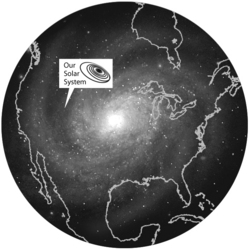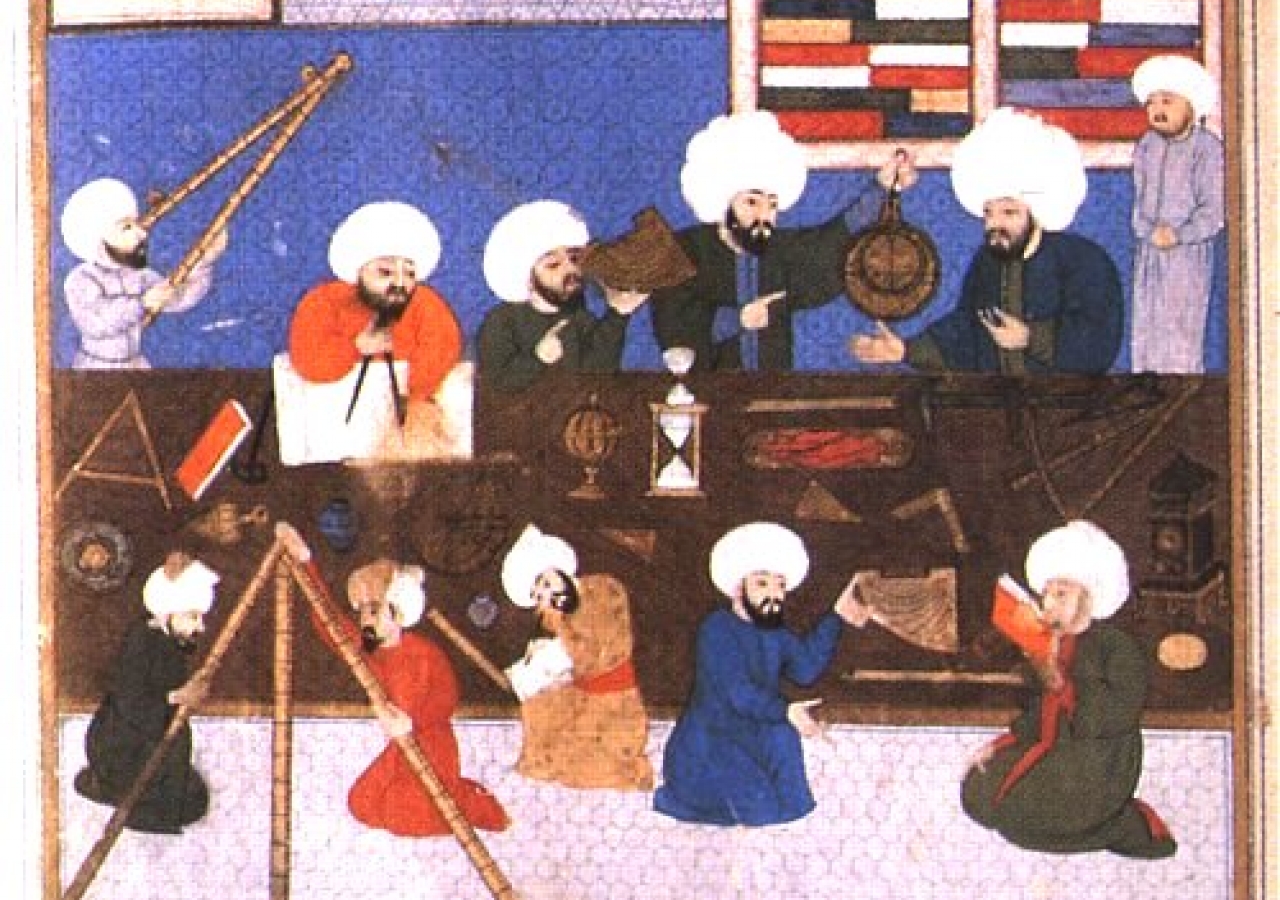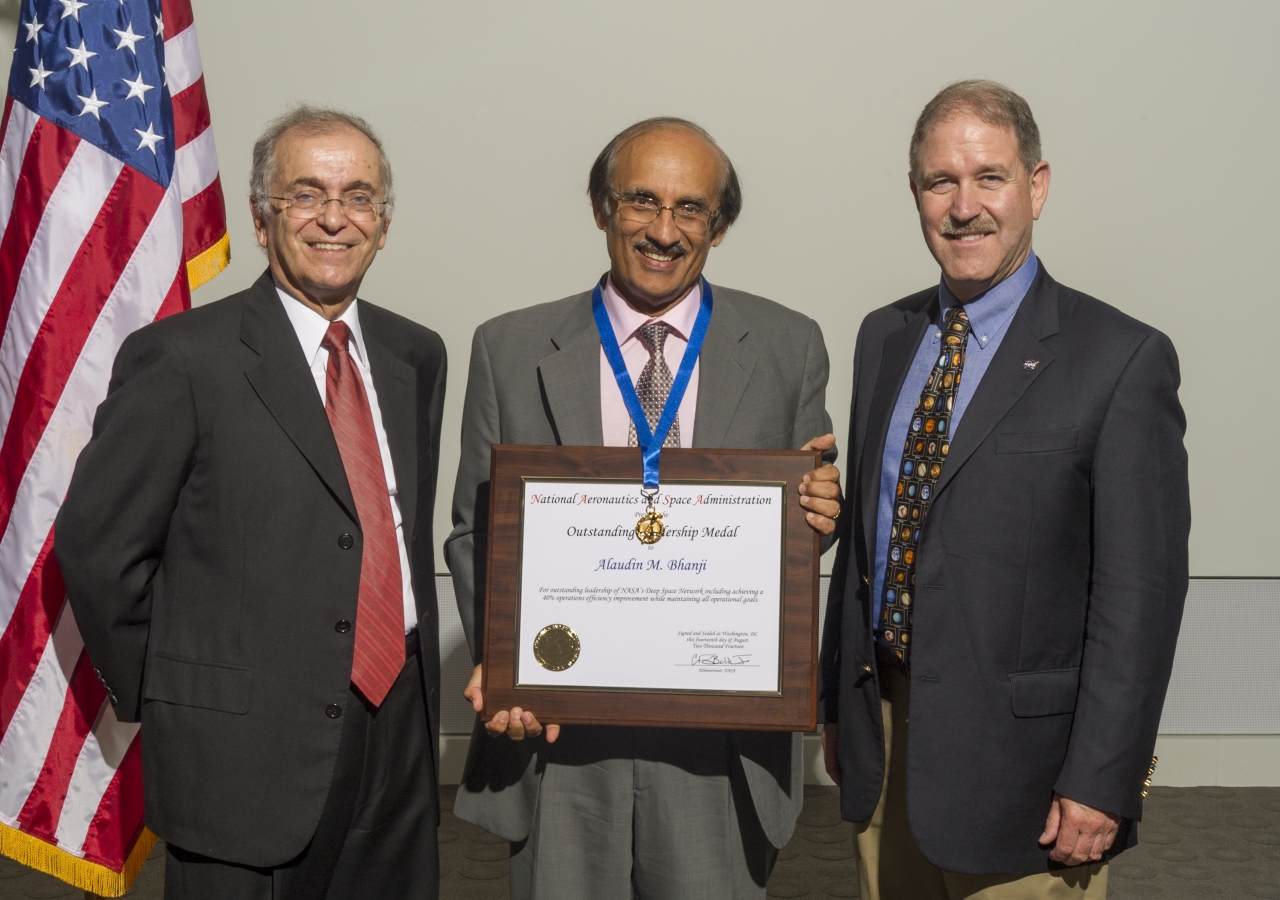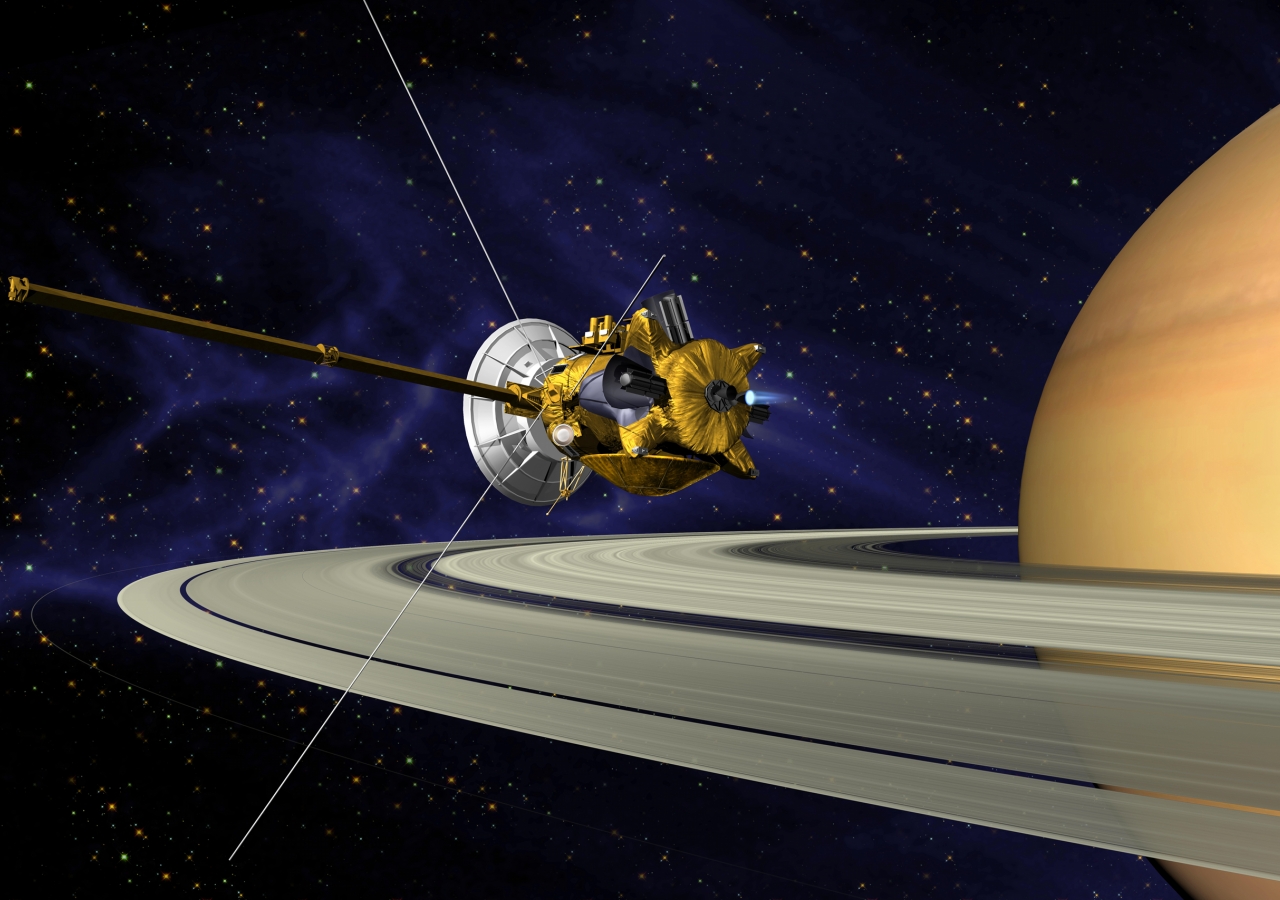Asteroid Bhanji was named by the International Astronomical Union for Alaudin Bhanji, a manager at NASA's Jet Propulsion Laboratory (JPL), in Pasadena, California. His entire professional career has been with JPL, conceiving and implementing NASA’s next generation Deep Space Network (DSN). For more than four decades, his vision and leadership were instrumental and crucial to NASA's mission successes.
James K. Erickson, Manager of JPL's Mars Science Laboratory Project says: "On all the projects that I have managed, the one thing that we always counted on was Alaudin Bhanji and the DSN delivering services when we needed them. He was always there for us, no matter what or when we needed it.”
The DSN is an international array of three giant radio antennas, each 230 ft. in diameter, and nine others at 112 ft. in diameter, that monitor and support interplanetary spacecraft missions, as well as some that are in earth orbit. The DSN also provides radar and radio astronomy observations to increase our understanding of the universe. It is the world's largest and most sensitive scientific telecommunications system.
img_2264_3_alaudin.jpg

Impact of DSN Communications
DSN facilities are located near Barstow, California, Madrid, Spain, and Canberra, Australia. These locations allow constant communication with spacecraft as the earth rotates, providing critical information to and from spacecraft, including images and scientific information from space. This network of antennas also enables scientific investigations into the nature of asteroids and the interiors of planets and moons.
Despite budget constraints and some questioning the value of space missions, Alaudin remarks on the future of space exploration: “There are two trends that affect space exploration, and there is good reason to be optimistic. First, broader international participation, both in space missions and international cooperation missions, is positive. Second, there are ongoing initiatives to make NASA’s limited budget more focused and efficient.”
While this was an unexpected honor, Alaudin is reluctant to admit his contributions but is quick to praise the staff that work at JPL who have made the DSN facilities and communications systems so successful for NASA missions.
Achievements and Legacy
Joining JPL in 1976 after graduating from Caltech, Alaudin managed both of JPL’s Flight and Ground Communications Sections and later, the Telecommunications Division, before becoming Project Manager of the DSN in 2004.
With several papers published, Alaudin is well-known in the field of high power microwave generation and transmission and has been actively involved in that community, sitting on several formal and informal review boards. He is a recipient of many awards from NASA, the US government, and international agencies, for his service and leadership, including NASA's Outstanding Leadership Award, and the JPL Magellan Award.
While being involved with extra-terrestrial matters, Alaudin has spent much of his adult life involved in matters on terra firma also, serving the Jamat and its institutions for over 30 years, including as President of the Council for USA (1999-2005).
solar_system.jpg

Asteroids in Space
The almost infinite size of space and the objects within it are beyond understanding except perhaps to the most learned physicists and astronomers, and its origins still remain a mystery to all. In 2016, an article in Science magazine suggested that there are about 2 trillion galaxies in the observable universe. The Milky Way galaxy, which contains our solar system, is estimated have 200 billion stars like the sun, its planets, asteroids, and other masses. If one can imagine our Sun as a grain of sand, our Solar System would fit into the palm of one's hand, and the Milky Way Galaxy, with its 200 – 400 billion stars, would span North America.
With advanced technology, we have pushed the boundaries of the known and observable universe; as an example, the Hubble Space Telescope's eXtreme Deep Field image can show scientists galaxies more than 13 billion light years away, close to their creation; and yet, the universe continues to expand.
Within our own solar system are asteroids, small, rocky objects that orbit the sun, like planets, but are much smaller than planets, with most of them being in the main asteroid belt — a region between the orbits of Mars and Jupiter. The belt is estimated to contain between 1.1 and 1.9 million asteroids larger than 1 kilometer (0.6 miles) in diameter, and millions of smaller ones.
Asteroids are left over from the formation of our solar system, some 4.6 billion years ago when a massive cloud of gas and dust collapsed. Some of the material fell to the center of the cloud and formed the sun. Some of the condensing dust became planets. Asteroids are the remnants of this event that never attached to planets.
While most asteroids disintegrate as they enter the earth's atmosphere, some have been large enough to create massive craters, with catastrophic impact. The extinction of the dinosaurs 65 million years ago is thought to have been caused by such a crater in the Yucatan Peninsula. The resulting super-heated dust, ash, and steam caused wildfires and dust particles that would have darkened the earth, killing plant and animal life. A small asteroid about the size of a boulder recently slammed into the earth in rural Botswana at an astonishing speed of 38,000 mph, exploding into a massive fireball.
Another asteroid impact is expected in 2027 in the Pacific Ocean area. NASA and the European Space Agency are cooperating in a venture to see if they can deflect the path of the small Didymoon asteroid, by striking it with a satellite in 2022, hopefully allowing us to avoid future impacts.
Medieval Muslim astronomers. Photo: University of North Florida
While not an astronomer, Alaudin's efforts at increasing our understanding of the universe place him in the company of great astronomers and intellectuals of the past who have had planets named after them, including the Muslim scientist, astronomer and mathematician, Al-Farabi, as well as Al-Khwarizmi, Abulghazi, Al-Tusi, Al-Sufi, Al-Battani, Al-Farghani (the Uzbek city of Farghana is named after him) and Omar Khayyam.
The first observatory is said to have been built by Caliph Al-Mamun in 828 CE. Other notable observatories include the one at Maragha built by Hulagu Khan for Nasir al-din al-Tusi in 1259; the Observatory in Samarkand, Uzbekistan, built in the 1420s by the Timurid ruler and astronomer Ulugh Beg; and the Istanbul observatory built by Sultan Murad III in 1569 for Taqi al-din Muhammad.
In this tradition, and that of Copernicus, Galileo and Newton, JPL's DSN antennas are being used to explore the farthest regions of space, bringing us closer to understanding its almost infinite size, as well as its origins.











